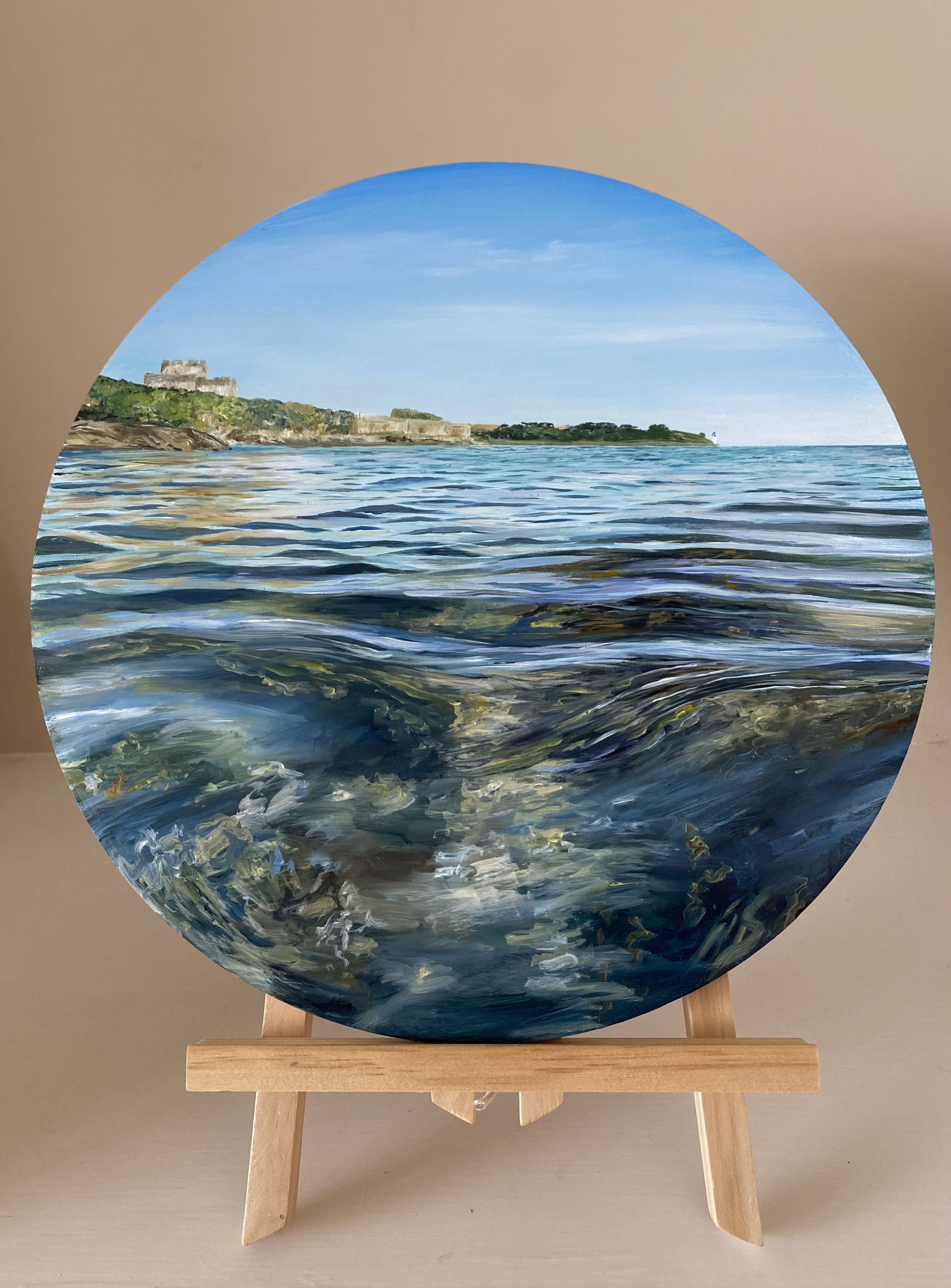Seascape Paintings
It was so important for me to learn how reflections work and to observe the sea at different times of the day to learn how to paint it the way I wanted to. The ocean reflects the sky primarily through the interaction of light with the water's surface. This phenomenon is known as "water surface reflection" or "specular reflection." When light from the sky falls onto the surface of the ocean, several optical processes occur that result in the reflection of the sky's colors and patterns.
Here's how the ocean reflects the sky:
Specular Reflection: Specular reflection occurs when light rays strike a smooth surface and bounce off at the same angle as they arrived. The surface of the ocean acts as a mirror in this case, reflecting the sky in a way that preserves its colors and brightness. On calm days with minimal waves, the ocean's surface is smoother, leading to a more defined reflection of the sky.
Angle of Incidence: The angle at which sunlight or moonlight hits the ocean's surface affects the intensity and direction of the reflected light. During sunrise and sunset, when the sun is near the horizon, the light has to travel through more of Earth's atmosphere. This scattering of shorter wavelengths results in the beautiful array of colors seen in the sky during these times, and the ocean reflects these colors back.
Atmospheric Conditions: The atmosphere plays a role in how the ocean reflects the sky. If the sky is clear and there is little atmospheric haze, the ocean's reflection will be more accurate and vivid. On the other hand, if there are clouds or haze in the atmosphere, the ocean's reflection may appear softer or diffused.
Surface Texture: The texture of the ocean's surface also affects the quality of the reflection. When the water is calm and still, the reflection is more distinct. However, when there are ripples, waves, or wind-driven motion on the water, the reflection becomes distorted or broken.
Time of Day and Weather Conditions: Different times of the day and weather conditions can influence the appearance of the ocean's reflection. For example, during golden hours (near sunrise and sunset), the sky and ocean may have a warm, golden glow, creating a stunning visual effect.
Geographical Factors: The colour of the ocean's reflection may vary depending on the geographical location and the properties of the water itself. For instance, oceans with higher amounts of suspended particles or algae may exhibit different colors in their reflections.
https://whistlefish.com/blogs/our-blog/meet-the-artist-georgie-harrison-part2


